On-Page vs. Off-Page SEO: What’s The Difference?
-

Aaron Gray
- Blogs
-
 August 21 , 2023
August 21 , 2023 -
 15 min read
15 min read
I tried to come up with a clever intro for this piece, but to no avail. It may be a good thing, because on-page and off-page SEO are exactly what they say. So, let’s get the basics out of the way.
On-page SEO is concerned with optimisation strategies within the target page, whereas off-page SEO is for those outside the target page.
I wish it ended with that, but this rabbit hole goes deeper than you think. For example, what if I told you that only on-page SEO has a direct impact on SEO? And, in that case, what if I also told you this doesn’t make off-page SEO pointless? As I mentioned in a previous blog post, both are crucial but for different reasons. That’s what we’ll be exploring in this blog.
(A quick side note: some experts call it on-site and off-site SEO. But for consistency, I’ll use the more familiar terms.)
On-page SEO
The whole point of on-page SEO hinges on how search engines crawl pages and index them on certain queries. The keyword is the most basic means of indexing. If a page has a keyword – say, ‘link building’ – it’ll appear on the search results.
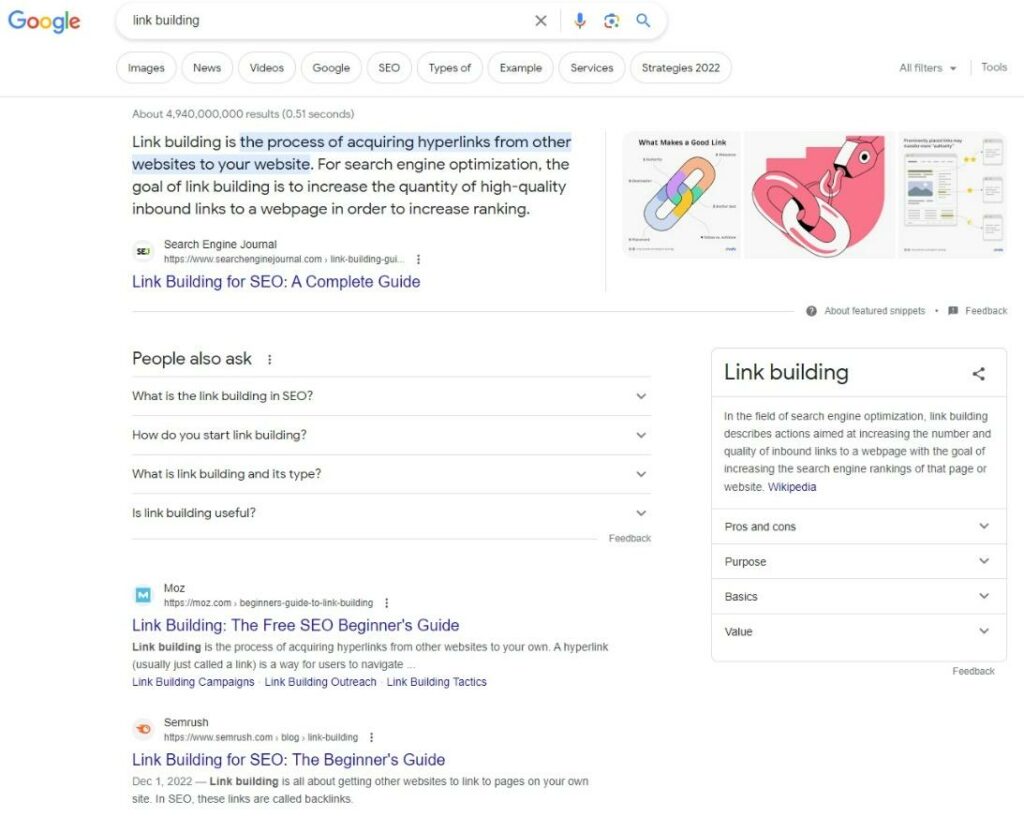
It used to be that simple a few decades ago, but evolving consumer needs and the discovery of flaws in the system back then prompted an overhaul. In short, you can’t get away with stuffing your content with keywords anymore. On-page SEO has expanded to include the following:
- Title tags
Title tags (also called ‘meta titles’) are the headlines that appear in search results. They relay the idea of a piece of content in a nutshell.

Google and the SEO industry agree that title tags are a ranking factor, though a minor one. Regardless, with Google still mum about its full list of ranking factors, knowing what will and won’t rank is a welcome advantage.
Fortunately, optimising title tags is as easy as making sure the keyword rolls off the tongue. On top of that, you’d want to keep the title from 50 to 60 characters long (including spaces) for better comprehension and user-friendliness. It’s also advisable to place the keyword at the beginning of the title whenever possible.
- Meta descriptions
Title tags are always seen together with meta descriptions, which are longer strings of text below the title. Like title tags, meta descriptions relay the idea of content to search engines, only more detailed. But unlike title tags, they aren’t a ranking factor.
Well, they used to be one until Google took them out of the algorithm in the 2000s, as they’re highly prone to keyword stuffing. Since then, it’s been generating meta descriptions for most pages, usually the first paragraph of the content. Returning to the example above, I confirmed via an online tool that Google’s meta description differed from what was set.

If making them is pointless, why am I still discussing them here? As we’ll learn when we start talking about off-page SEO, meta descriptions benefit the page’s SEO the same way other off-page SEO factors do. And they’re by no means unique.
- Headings
Google mentioned that HTML heading tags are a strong ranking factor. Ranging between H1 and H6, these tags tell search engines how a page’s content is structured. The algorithm will be able to find what a user’s looking for, no matter the tag used.
To show you their effects, let’s take the example above again. Its meta description may differ from the original, but it’s no less useful. That screenshot is one of the results for the search term ‘reciprocal link building,’ and Google determined that a section of that blog post makes for a better meta description.

The H1 tag is used for the title of your content, so it should only be used once. You’ll often use H2 and H3 tags for structuring your content, but you should avoid overdoing it. Personally, I limit my heading tags to H3 to make the content appear cleaner and more user-friendly.

- Content
The content is the star of any SEO endeavour. In fact, every factor I’ll break down here pales in significance to the adage ‘Content is king.’ This isn’t just referring to blog posts but also off-page articles, product pages, online tools, listings, and others.
Some will dispute that, but I’ve believed this adage for the longest time, given my beginnings as a content writer. However, if I were to point out a better reason, it must be the major shift in how brands market their goods and services. You’ve probably heard how marketing professionals urge businesses to ‘sell solutions, not products.’
Think of me right now as someone trying to sell you the latest smartphone. I can spend the whole day explaining its state-of-the-art features, such as a 200-megapixel rear camera and 4K-ready video capture. Next, picture yourself as a freelance event photographer looking for a good camera. Will a smartphone’s camera be as good as a DSLR or a mirrorless one?
As long as that question remains unanswered, you won’t be able to come to a decision. So, I write up an article on the topic to help you out. You stumble upon it, read the content, and become impressed by the fact that it answers every question you have. More importantly, you notice that I’m the author, and you head to my store to know more.

Making effective content requires a clear idea of what people are searching for. That’s where keyword research comes in. It’s beyond this post’s scope, but it’s worth doing further research into because it plays a crucial role in optimising content for maximum visibility and relevance.
- Images
Did you know that Jennifer Lopez is indirectly credited for creating Google Images? Well, to be precise, it’s the green dress she wore at the 2000 Grammy Awards.

A reimagined version of her dress shown during a 2020 fashion show in Milan, Italy (Source: Getty Images/BBC)
Google noticed that her dress was the talk of the town. However, people wanted to see the actual dress, and words alone wouldn’t cut it. In 2001, it rolled out Google image search – not the first of its kind, but the technology back then couldn’t match the exact query. If I looked for ‘Jennifer Lopez green dress’ back then, search engines would have given images of either Jennifer Lopez or generic green dresses.
The fact that Google has a section explaining image SEO best practices indicates that images are a ranking factor. While they make content appear attractive and engaging, optimising them for search makes more sense for increasing brand exposure in image search. Contrary to popular belief, having too many or too few images won’t impact SEO.
- Internal links
To index every page on a site, search engines require the pages to be interconnected. If the crawler doesn’t see the road leading to a specific page, that page will be left out of most, if not all, search queries. Visitors won’t be able to see it unless they take time to go deeper.
Establishing this link network can be done with internal linking. I’m not just talking about setting up a sound hierarchy of pages but also bridging distant pages. I’ll show you one example right now: check your site for broken links with NO-BS’s broken link checker.
By linking you to the broken link checker, I just saved you the trouble of scrolling up to the top-hand menu and searching for the tool. This blog post and the tool lie at different levels in the hierarchy, and internal linking created a direct route. Apart from making navigation easy for visitors, it also helps distribute link equity (also known as ‘link juice’).
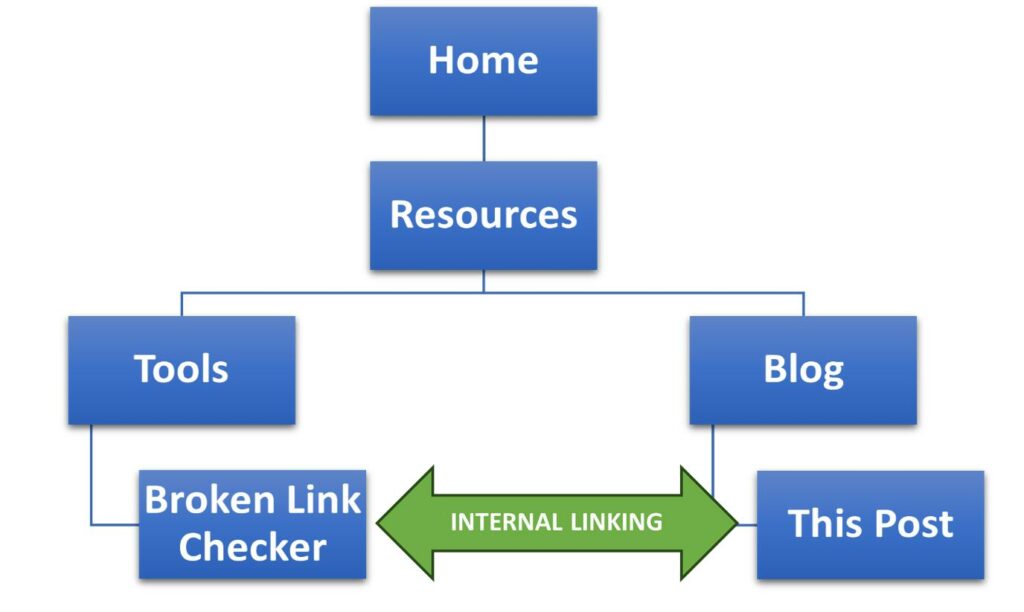
You can expect this post (and others like it) to carry several internal links, but it’s not because I’m trying to promote NO-BS’s products and services. This post won’t be able to tackle some subjects, so the next best thing is to lead readers to other posts that explain them better. Some professionals also refer to this practice as contextual linking.
- Schema markup
Schema is a crucial facet of modern search because of its ability to structure content based on category. As of this writing, this is the closest we’ve gotten to search engines that understand context and, more importantly, user intent.
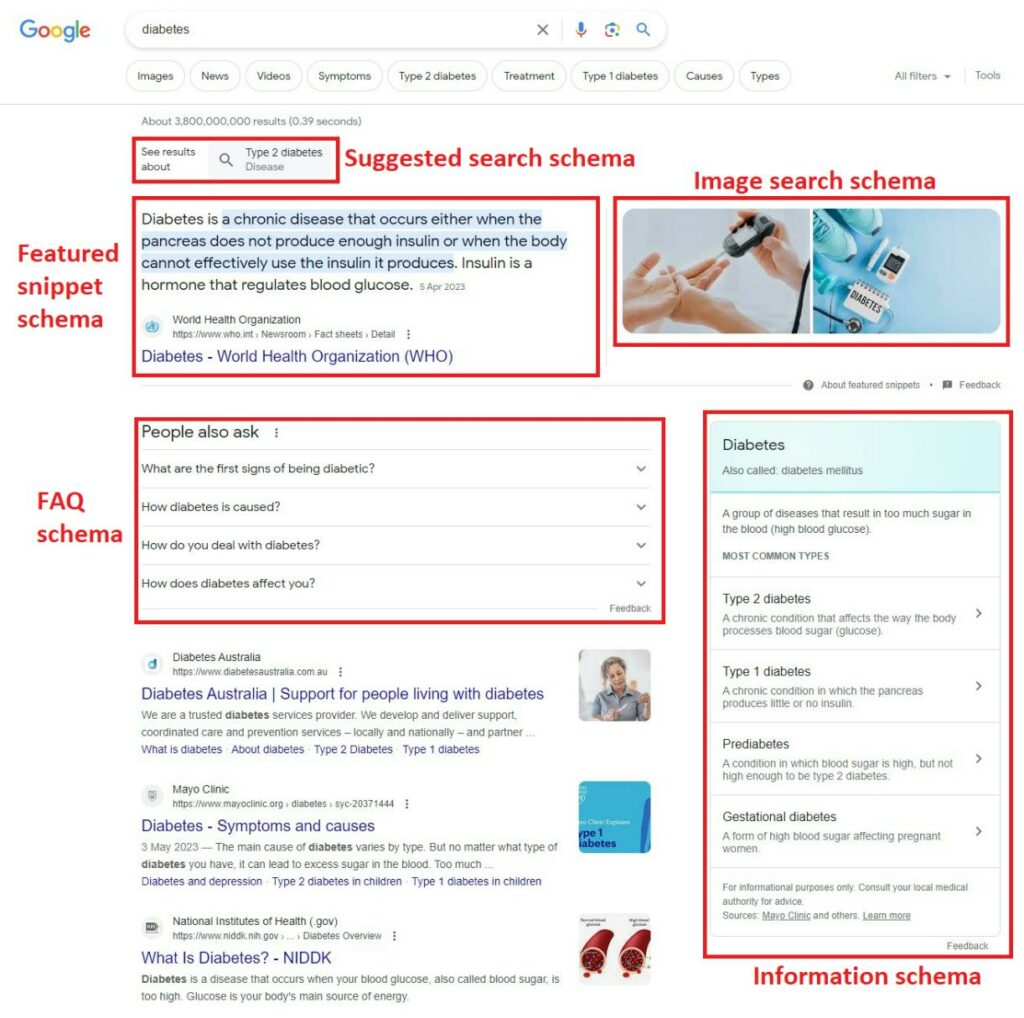
Schema has rewritten the SEO doctrine since its rollout to the program’s participants, like Google and Yahoo. For starters, the top result for most queries is whatever appears as the featured snippet (which doesn’t necessarily have to be from a result in the first page). Results can also appear on the People Also Ask section, provided their content is the most suitable answer.
Like meta descriptions, using Schema isn’t a ranking factor, but it benefits a page’s SEO the same way off-page SEO factors do. Think of it as a way that makes Google’s job easier.
Off-page SEO
One of the most common missteps in SEO is creating content to please the search engine. Sure, you don’t want to get on Google’s bad side, as some businesses have learned the hard way, and the best way to do that is to play by the rules.
But as you know, Google cares little about sites pandering to its interests. All it demands of sites is to create ‘helpful, reliable, people-first content,’ one that customers will thank businesses for. Modern SEO has done away with keyword stuffing because people found it to be unhelpful, not to mention annoying. Can you imagine a keyword appearing every several words in an article?

To help enforce its people-first requirement, Google began reviewing page content quality based on the author’s expertise, authoritativeness, and trustworthiness (later known as E-A-T). Recently, it added another E for experience, as in the author must be speaking from first-hand knowledge on the subject matter, hence E-E-A-T.
This is where off-page SEO comes in, whose purpose is to build up these qualities in a business. It doesn’t affect a page’s ranking the same way on-page SEO does, but thanks to Google’s E-E-A-T, it isn’t any less important. The areas of focus for off-page SEO include:
- Backlinks
If internal links pass link equity between pages in a site, backlinks do the same but between sites. When one site links your page in its content, it virtually vouches for the page’s quality and the author’s expertise on the subject. Backlinks are one of the few areas in off-page SEO that influence search rankings.
Up to this point, I linked parts of this post to two websites belonging to Google, which means Google has two backlinks from NO-BS. Assuming Google decides to link this post to one of its blogs, this post will get a backlink from Google. More backlinks increase the reputation of the page and, to some extent, its parent site.
Of course, building backlinks should be done according to current SEO best practices. That means not propagating low-quality links or purchasing links from dubious sources. Otherwise, Google will find out and hand your site a penalty.
- Social media
Google used to operate its own social media platform called Google+, but it couldn’t stand up to the market’s titans, such as Facebook and Twitter. It’s unfortunate because a business with a Google+ account would’ve been guaranteed some search exposure.
With the platform’s closure in 2019, social signals as a ranking factor seem to be a thing of the past. Only a few search queries guarantee that a business’s social media page will rank, such as entering its name.

Though likes, shares, and follows aren’t a ranking factor, search engines still value them, as they enrich user experience. On top of that, experts iterate that businesses shouldn’t rely on one source of organic traffic. Given enough traffic to the site, it’ll eventually find its way to the top of search results.
- Guest blogging/posting
Publishing your content on a site other than yours can increase search rankings, but only if the content contains quality backlinks. If it doesn’t, there’s still an opportunity or two to be made, as it establishes the business as an authority on a topic.
Guest blogging these days has become difficult for several reasons. First, everyone and their grandma are doing it, giving publishers the unenviable job of sorting through endless pitches. A pitch that doesn’t sound special enough will likely be buried in the publisher’s inbox, never to see the light of day.
Second, Google requires links in guest content to be nofollow. Although more of a hint than a directive, nofollow links remain true to their initial design: letting search engines know not to weigh them when ranking pages. At the cost of a weakened ranking, site admins can prevent unnatural or spammy links placed on their pages from triggering the algorithm.
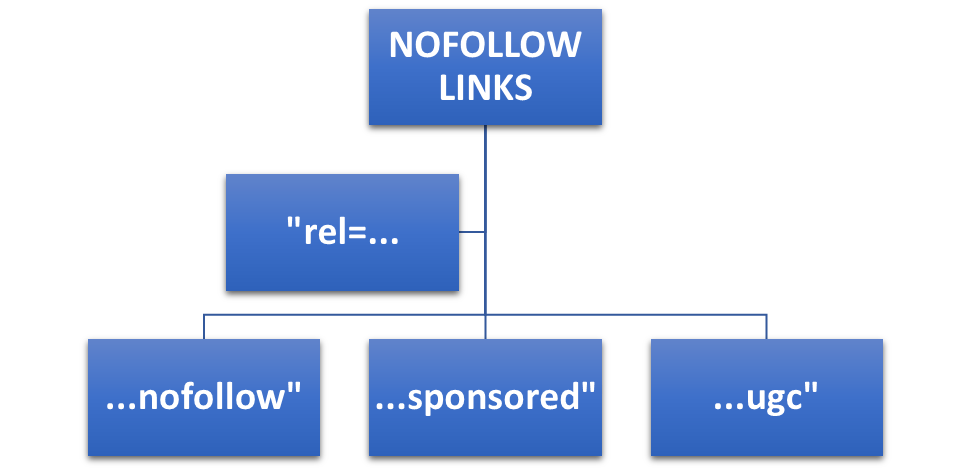
However, take note that a weakened rank doesn’t equate to reduced traffic. Nofollow links in a well-written guest post will still attract traffic, especially those from high-authority sources. This way, you can enjoy an uptick in your SEO while avoiding penalties.
- Press releases
The same conditions and rules for producing SEO-friendly guest posts apply to SEO-friendly press releases. Google is clear about press releases not being a ranking factor because of their nature. Press releases are made by the businesses themselves, including link placements.
That said, press releases still carry value in modern SEO, as long as you know they shouldn’t be used for earning backlinks. Instead, use press releases for what they’re created for: telling people about a new product or promotional event or conducting damage control. If the press release is eye-catching enough, the link equity will come eventually.
Some online services like Help a Reporter Out (HARO) can help maximise the chances of your press release being picked up and featured. Sign up as a source and look for requests from journalists that fit the bill. Rinse, repeat, and reap the rewards.
- Content marketing
Amid the definitions given by experts left and right, content marketing is essentially this: ‘A Pulitzer-worthy article won’t matter if not a soul knows it exists.’ Your content should come to people, not the other way around.
Content marketing and SEO always have each other’s backs. Content marketing produces the content, while SEO improves the content with the right keywords, links, and user experience. Without proper SEO, even well-produced content will be buried to oblivion. Without proper content, SEO isn’t going to bring fresh leads to a business.
Why they must work together
So far, we’ve established that on-page SEO influences a page’s ranking directly, while off-page SEO does the same but by building a reputable image. In the context of pool, on-page SEO is hitting a ball square in the face, while off-page SEO is akin to trick shots, which are always a treat when successful.

I don’t play pool, but I know that the world’s biggest names in the sport are skilled enough to plan their shots, including the tricky ones. The same can be said for an SEO strategy.
One argument for warranting both on-page and off-page SEO is that search engines weigh them nearly equally. Exact numbers are hard to come by, but a Moz study explains that off-page SEO outweighs on-page SEO by a small margin. Conversely, most of user activity happens on-page, about 70% of the time, according to one estimate.
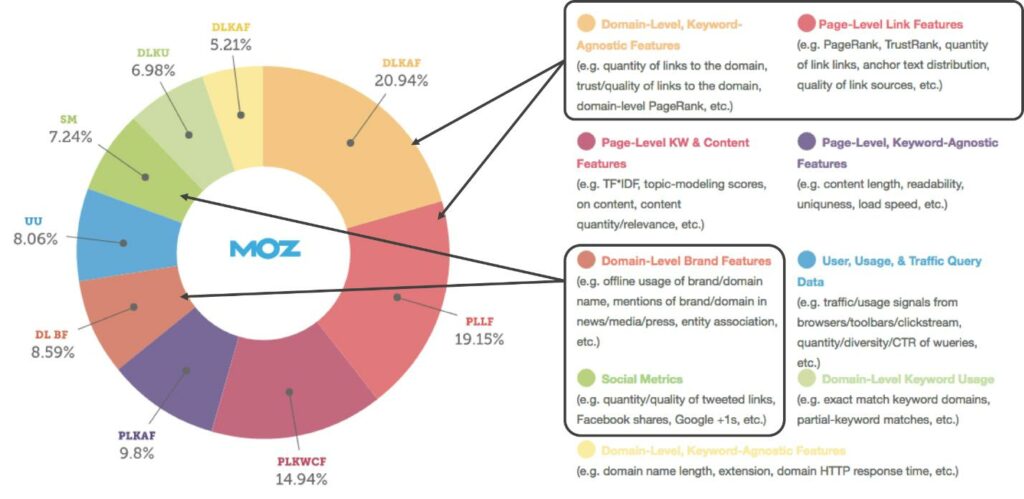
As you can see, the jury’s still out as to which of the two takes utmost priority. As long as Google keeps the rest of its ranking factors a well-guarded secret, we’re unlikely to get an answer. That being the case, favouring one over the other will hurt your SEO strategy in the long term.
But okay, some of you probably don’t want such a vague answer. If one of them should take top priority, start with enhancing the site’s on-page SEO. In the end, on-page SEO holds sway over search engine operations because of their use of keywords, especially in the title tags and meta descriptions. If you can hit the ball directly, do that first – no need to overthink things.
Conclusion
At this point, I’ve probably said everything that needs to be said regarding on-page and off-page SEO. However, it’s important to emphasise that SEO success stories aren’t solely dependent on implementing technical optimisation techniques or acquiring backlinks. While these factors play a significant role, they’re just a part of a broader picture. The real essence of SEO success lies in crafting sound strategies that enhance a website’s overall user experience and reputation in the digital space.
Subscribe to Our Blog
Stay up to date with the latest marketing, sales, service tips and news.
Sign Up
"*" indicates required fields


